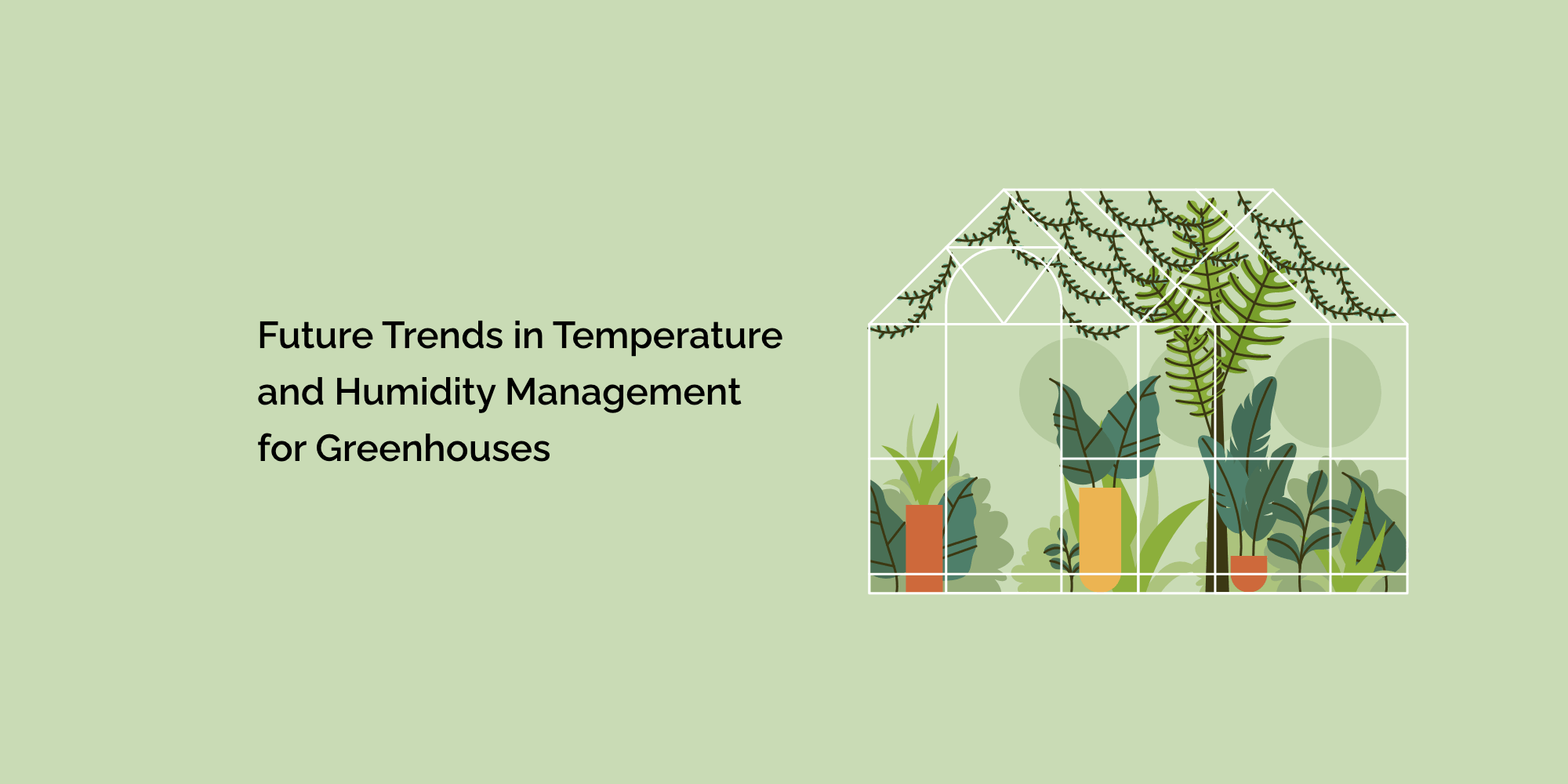Greenhouse cultivation plays a crucial role in meeting the growing demand for food production and ensuring year-round crop availability. Temperature and humidity management are essential factors that significantly impact plant health and growth. As technology advances, new trends are emerging in greenhouse climate control, offering exciting possibilities for more efficient and sustainable practices. In this blog post, we will explore the future trends in temperature and humidity management for greenhouses, highlighting the potential benefits and advancements that can shape the future of greenhouse cultivation.
Precision Climate Control:
- Sensor Technology: Advancements in sensor technology are revolutionizing greenhouse climate control. Highly accurate and sensitive sensors can provide real-time data on temperature, humidity, light levels, CO2 levels, and plant stress indicators. This data can be used to precisely monitor and adjust environmental conditions, allowing for optimal plant growth and resource management.
- Internet of Things (IoT): Integrating IoT technology in greenhouse operations enables remote monitoring and control of temperature and humidity conditions. IoT systems can collect and analyze sensor data, provide alerts and notifications, and automate climate control systems. This level of connectivity and automation enhances precision and reduces the need for manual intervention.
Energy Efficiency and Sustainability:
- Renewable Energy Integration: Greenhouses of the future will likely incorporate renewable energy sources to power climate control systems. Solar panels, wind turbines, or geothermal systems can generate clean energy to meet greenhouse energy needs, reducing reliance on traditional energy sources and minimizing carbon footprint.
- Energy-Optimized Systems: Advancements in energy optimization algorithms and intelligent control systems will play a significant role in reducing energy consumption. These systems can analyze real-time sensor data, weather forecasts, and historical patterns to optimize heating, cooling, and humidity control, ensuring energy-efficient operations without compromising crop quality.
- Greenhouse Insulation Innovations: Improved insulation materials and construction techniques will help reduce heat loss during winter and heat gain during summer. Enhanced insulation properties can minimize the need for mechanical heating or cooling, leading to energy savings and better climate control.
Climate Adaptation:
- Climate-Specific Greenhouse Designs: As climate change poses new challenges, greenhouse designs will evolve to adapt to changing conditions. This may include the development of innovative structures that provide better insulation, heat reflection, or cooling capabilities, enabling more efficient temperature and humidity control in diverse climate regions.
- Water Management: Water scarcity is a growing concern globally, and future greenhouses will emphasize efficient water management. Technologies like closed-loop irrigation systems, hydroponics, or fogging systems will reduce water consumption while maintaining optimal humidity levels. Water recycling and rainwater harvesting techniques will also be incorporated to minimize water waste.
Data-Driven Decision Making:
- Artificial Intelligence (AI) and Machine Learning: AI and machine learning algorithms will enable intelligent data analysis and predictive modeling. These technologies can process large volumes of data, identify patterns, and make informed predictions about temperature and humidity trends. This information will assist greenhouse operators in making proactive decisions to optimize climate control and crop management.
- Crop-Specific Algorithms: Tailored algorithms will be developed to optimize temperature and humidity control for specific crops. To create customized climate profiles, these algorithms will consider crop growth stages, environmental factors, and historical data. Crop-specific algorithms will enhance precision, maximize yields, and improve overall crop quality.
Integration of Advanced Climate Control Techniques:
- Vertical Farming and Indoor Growing: Vertical farming and indoor growing systems provide precise control over temperature and humidity. Stacked cultivation layers with integrated LED lighting, advanced air circulation, and closed-loop climate control systems allow year-round production in urban environments. These systems optimize space utilization, reduce water consumption, and provide consistent climate conditions for crops.
- Dynamic Climate Partitioning: Dynamic climate partitioning involves dividing the greenhouse into smaller sections with independent climate control. Each team can have unique temperature and humidity settings based on specific crop requirements, growth stages, or research needs. This allows for optimized resource allocation and customized climate conditions.
Certainly! Here are some frequently asked questions (FAQs) about temperature and humidity management in greenhouses:
What is the ideal temperature range for greenhouse crops?
The ideal temperature range for greenhouse crops varies depending on the cultivated crops. However, most greenhouse crops thrive within a range of 65°F to 80°F (18°C to 27°C) during the day, with slightly cooler temperatures at night. Some crops may have specific temperature preferences within this range.
What is the ideal humidity range for greenhouse crops?
The ideal humidity range for greenhouse crops can vary depending on the specific crops being cultivated. However, most greenhouse crops thrive within a relative humidity range of 50% to 70%. Depending on their natural habitat or growth stage, some crops may require higher or lower humidity levels.
Conclusion:
The future of temperature and humidity management in greenhouses is exciting and holds immense potential for more efficient and sustainable cultivation practices. Precision climate control through advanced sensor technology, IoT integration, and AI-driven algorithms will revolutionize greenhouse operations. With renewable energy integration, optimized insulation, and intelligent control systems, energy efficiency and sustainability will be at the forefront. Climate adaptation strategies and data-driven decision-making will enable greenhouse operators to overcome environmental challenges and optimize crop production. By embracing these future trends, greenhouse cultivation will become more resilient, productive, and environmentally friendly, contributing to a sustainable and secure food supply for the future.








